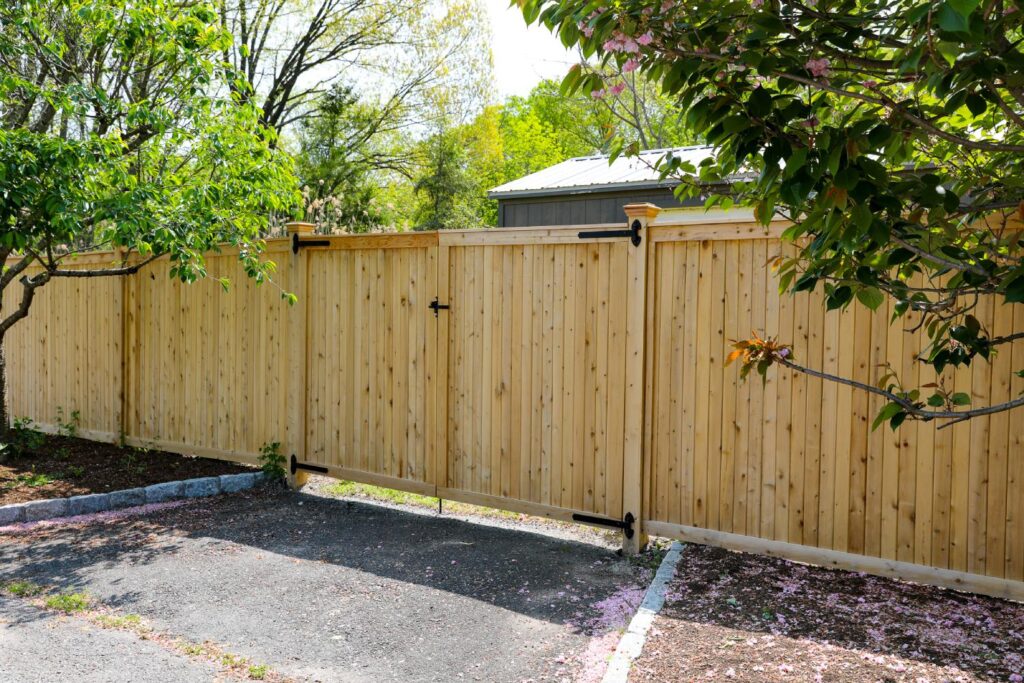All Categories
Featured

Whether it's solid winds, rainfall, snow, or intense warm, climate conditions can progressively weaken your fence, leading to expensive fixings or replacement. There are numerous steps you can take to shield your fencing from weather-related damage and prolong its life-span.
- Choose the Right Material. The sort of product your fence is made from plays a substantial role in how well it will hold up against weather. Some materials are naturally extra immune to damage than others. :
Wood Fences: While traditional and gorgeous, timber can be vulnerable to wetness, rot, and pests. Nonetheless, pressure-treated timber or cedar can provide much better resistance to these problems. Vinyl Fencings: Plastic is extremely resistant to dampness, rot, and insects. It additionally stands well to extreme sunlight and heavy rainfall. Metal Fences: Wrought iron or aluminum fences are long lasting and can stand up to a range of weather. They can, however, experience corrosion in time, particularly otherwise correctly covered. Composite Fences: Made from a mix of wood fibers and plastic, composite fences are a lot more immune to weather-related damage contrasted to typical timber fencings. Choosing the right product for your region's environment is the very first action in safeguarding your fence from climate damage.
- Seal or Stain Wooden Fences. Wooden fencings are specifically prone to harm from wetness, UV rays, and temperature level fluctuations. One of the most reliable ways to shield your timber fence is by applying a protective sealer or discolor. These products help:
Prevent Water Damages: Sealants create a waterproof obstacle, avoiding moisture from leaking right into the wood and triggering rot, mildew, or mold and mildew. Secure Against UV Damage: A great tarnish or sealant will likewise obstruct hazardous UV rays from the sunlight, which can cause wood to dry, fracture, and blemish over time. Protect the Fencing's Appearance: Regular discoloration assists preserve the natural beauty of the wood and expands its life expectancy. It's recommended to reapply the discolor or sealant every 1-- 2 years to keep your surround good problem.
- Set up a Barrier for Wind Defense. Strong winds can create substantial damages to your fence, especially if it is high or weak. Wind can bend or damage wood panels, loosen fence blog posts, or even create the whole fence to collapse. Mounting a windbreak-- such as planting bushes, bushes, or installing a mesh obstacle-- can aid shield your fencing from high winds.
Furthermore, you can reinforce the posts with concrete or metal braces to give added security and protect against shifting or leaning.
- Trim Overhanging Branches. Overhanging tree branches can pose a serious danger to your fence during storms or high winds. Falling branches can damage panels or damage the fencing messages, leading to expensive repair services. Frequently trim any kind of branches that hang over your fencing, especially if they remain in close closeness to it. Keeping the branches cut back lowers the danger of branches damaging off and causing damages to the fence.
- Regular Assessments and Upkeep. Doing routine maintenance and examinations is essential to catching prospective problems prior to they escalate. After a hefty storm, inspect your fence for any type of signs of damages, such as loosened panels, leaning posts, or broken areas. Caring for tiny issues before they end up being bigger ones can help prolong the life of your fence.
Additionally, cleaning your fence occasionally to remove mold, dirt, or debris can aid protect its look and stability. For wood fences, carefully pressure wash the surface to get rid of built-up gunk, and for vinyl fencings, utilize a light detergent to clean any discolorations.

- Ensure Appropriate Drain. Water damage is one of the most common weather-related concerns that impact fencings. Poor drain can lead to standing water around your fence posts, which can trigger the posts to rot or deteriorate over time.
- Apply a Safety Covering to Steel Fencings. Metal fencings, such as those made of iron or steel, are highly sturdy yet can be vulnerable to rust otherwise properly preserved. Using a safety coating or paint that is especially made for metal can aid avoid rust and deterioration. Make sure to examine the fence periodically for any signs of corrosion, and address it right away by fining sand and repainting the impacted locations.

Final thought. Your fencing is a useful financial investment, and protecting it from weather-related damage will assist make sure that it remains to serve its objective for years to come. By choosing the appropriate materials, frequently keeping your fencing, and taking actions to secure it from the aspects, you can lessen weather-related damages and expand its lifespan. Whether you're dealing with strong winds, hefty rain, or the severe sun, these straightforward actions can go a lengthy way in protecting the condition and look of your fencing, conserving you time and money in the future.
Latest Posts
A-Abel Roofing: Tinley Park’s Trusted Roof Repair and Installation Team
Published Jan 19, 25
1 min read
Customized Entrance Doors Visual Appeal
Published Jan 19, 25
0 min read
Top 5 Benefits of Hosting a Wedding in Atlantic City
Published Jan 19, 25
1 min read